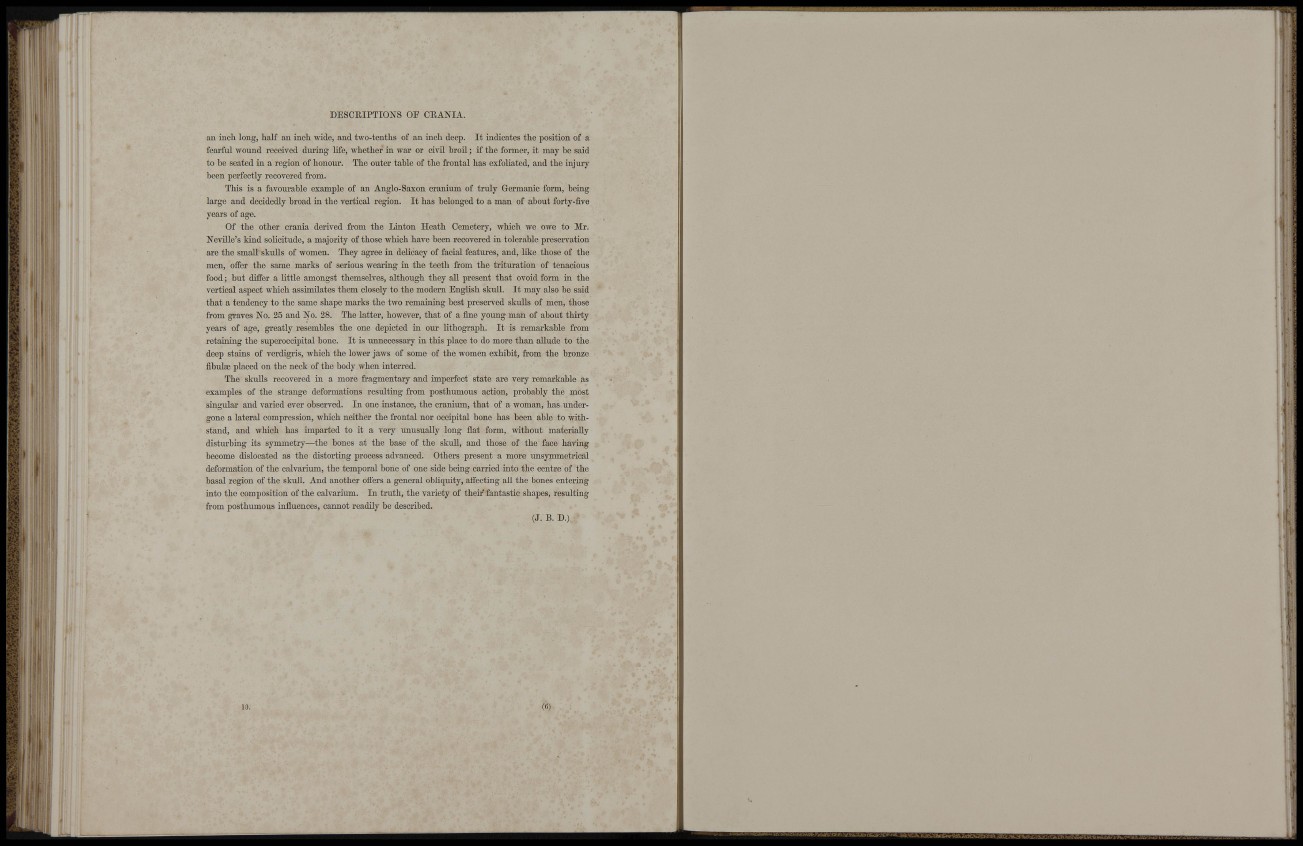
I
11! !|
II Ml
Ilil'llfll
(•
-t
vi
« t' . . M
li i
I 1
...
feii . t ' ll
I 'I
: I .
li"
DESCRIPTIONS OF CRANIA.
an inoli long, half an inch wide, and two-tenths of an inch deep. It indicates the position of a
feai'fiil wound received during life, whether in war or civU hroU; if the former, it may be said
to be seated in a region of honom-. The outer table of the frontal has exfoliated, and the injurybeen
perfectly recovered from.
This is a favourable example of an Anglo-Saxon cranium of truly Germanic form, being
large and decidedly broad in the vertical region. It has belonged to a man of about forty-five
years of age.
Of the other crania derived from the linton Heath Cemetery, which we owe to Mr.
Neville's kind solicitude, a majority of those which have been recovered in tolerable preservation
are the small skulls of women. They agree in delicacy of facial features, and, Kke those of the
men, offer the same marks of serious wearing in the teeth from the tritiiration of tenacious
food; but differ a little amongst themselves, although they aU present that ovoid form in the
vertical aspect which assimilates them closely to the modem English skull. It may also be said
that a tendency to the same shape marks the two remaining best preserved skulls of men, those
from graves No. 25 and No. 28. The latter, however, that of a fine young man of about thirty
years of age, greatly resembles the one depicted in our lithograph. It is remarkable from
retaining the superoccipital bone. It is unnecessary in this place to do more than allude to the
deep stains of verdigris, which the lower jaws of some of the women exhibit, from the bronze
fibulse placed on the neck of the body when interred.
The skulls recovered in a more fragmentary and imperfect state are very remarkable as
examples of the strange deformations resulting from posthumous action, probably the most
singular and varied ever observed. In one instance, the cranium, that of a woman, has undergone
a lateral compression, which neither the frontal nor occipital bone has been able to withstand,
and which has imparted to it a very unusually long flat form, without materially
disturbing its symmetry—the bones at the base of the skull, and those of the face having
become dislocated as the distorting process advanced. Others present a more unsymmetrical
deformation of the calvarium, the temporal bone of one side being carried into the centre of the
basal region of the skull. And another offers a general obKquity, affecting aU the bones entering
into the composition of the calvarium. In truth, the variety of their fantastic shapes, resulting
from posthumous influences, cannot readily be described.
(J. B. D.)
10. (C)
i :
i i'l.
!
1: